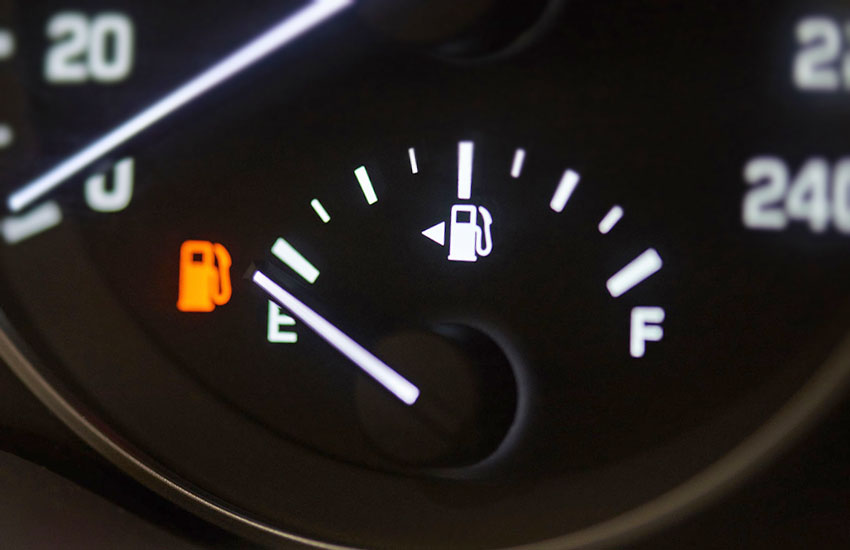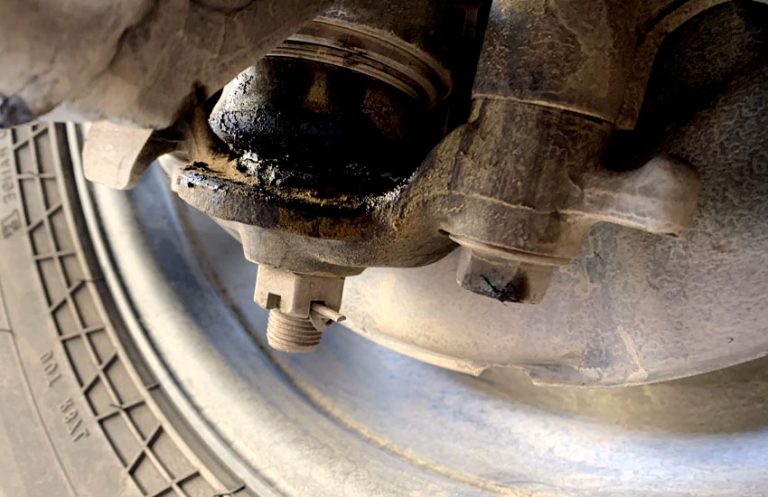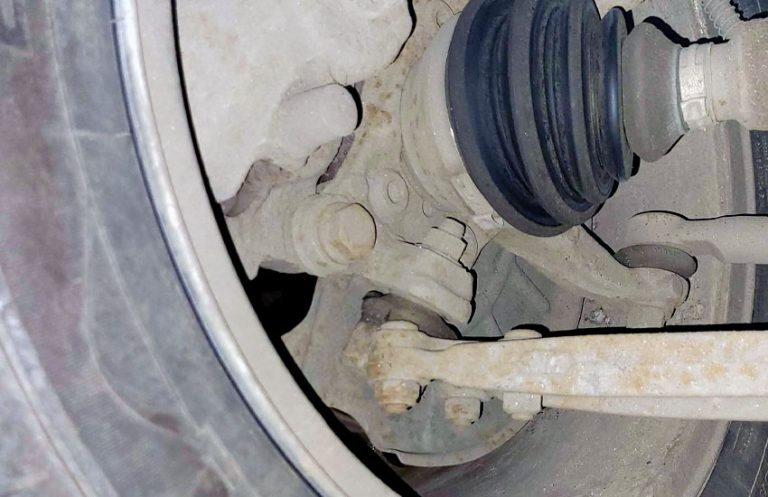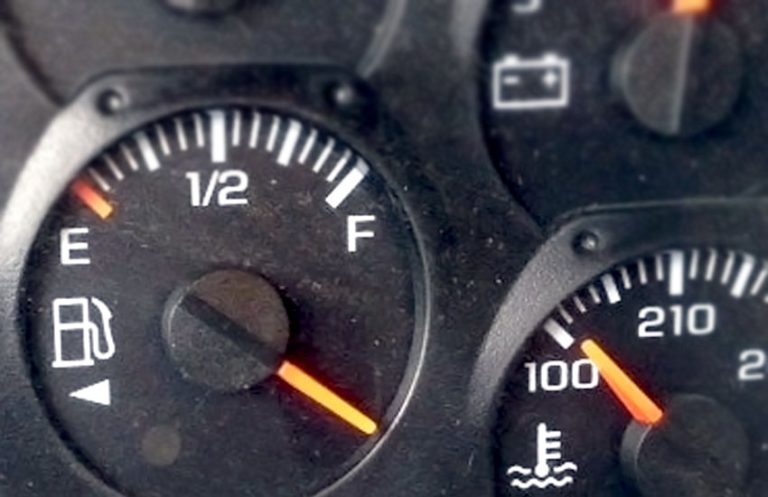Ever been driving down the road, minding your own business, when suddenly, your gas gauge drops to empty? Panic sets in, right? You’re thinking, “Do I have enough gas to get to the nearest station?” Don’t worry, you’re not alone! It’s a situation many drivers face, and while it might be alarming, it’s important to understand the causes and how to handle it. Let’s dive into the reasons behind a sudden drop in the gas gauge and how to deal with it without getting stranded.

Understanding the Basics of Your Gas Gauge
Your gas gauge is one of the most crucial indicators in your car. It tells you how much fuel is left in your tank so you can plan your trips accordingly. But, what happens when it suddenly drops to empty, even when you know there’s fuel in the tank?
How the Gas Gauge Works
First, let’s start with the basics. The gas gauge operates by reading the amount of fuel in your tank using a sensor located inside the fuel tank. This sensor works with a float, similar to a stick floating on water, to measure the fuel level. The more fuel there is in your tank, the higher the float sits, and the more the gauge moves toward the full side. When you’re running low on fuel, the float drops, and the gauge moves toward empty. Simple, right?
But what happens when things go wrong? Sometimes the sensor may give faulty readings, causing the gauge to drop suddenly even though you have plenty of fuel left. Other times, it might show that you have a full tank, even though you’re running low. So, what could cause these strange readings? Let’s take a closer look at the potential issues.
Electrical Problems Can Cause Misreading
One of the most common reasons your gas gauge suddenly drops to empty is an electrical issue. A malfunction in the wiring or a problem with the gauge itself can result in incorrect readings. For example, if the electrical connection between the fuel gauge and the fuel tank sensor is loose or damaged, the gauge may fail to receive the right signals, leading to erratic readings. In such cases, the gas gauge might show empty when you still have fuel in your tank.
Additionally, modern vehicles rely on complex wiring systems, and any issues with the electrical connections can lead to inaccurate data being sent to your gauge. This might happen if you’ve recently had work done on the car, like replacing the battery or doing some maintenance. Sometimes, the simplest fixes, like ensuring the electrical connections are secure, can resolve the problem.
Fuel Tank Sensor Issues
Another common culprit is a faulty fuel tank sensor. This sensor is responsible for telling the gas gauge how much fuel is in the tank. If the sensor becomes damaged or begins to malfunction, it can send incorrect signals to the gauge, causing it to read incorrectly. This can result in the gauge suddenly dropping to empty or failing to register any fuel at all.
Fuel tank sensors can wear out over time due to normal wear and tear, especially in older vehicles. In some cases, debris or dirt can also get stuck in the sensor, preventing it from working properly. If you notice that your gauge is suddenly dropping to empty, it might be time to have your fuel tank sensor inspected and replaced.
Issues with the Fuel Pump
The fuel pump is another important component that works closely with the gas gauge. If your fuel pump is malfunctioning, it may cause inaccurate readings on the gas gauge. In some cases, a failing fuel pump may prevent fuel from properly reaching the engine, resulting in low or fluctuating fuel readings on your gauge. This can sometimes cause the gauge to drop to empty when you know there’s still fuel in the tank.
Additionally, if your fuel pump is struggling to maintain the correct pressure, it can cause the fuel gauge to act erratically. For example, you might notice the gauge dropping to empty, even though you haven’t used much fuel. If you suspect the fuel pump is the issue, it’s essential to have it checked by a mechanic as soon as possible.
Problems with the Fuel Tank Float
The float inside your gas tank is responsible for measuring the fuel level. It moves up and down as the fuel level changes, sending signals to the gas gauge to provide an accurate reading. However, if the float becomes stuck, broken, or damaged, it can cause the gas gauge to malfunction.
A faulty float may cause your gauge to show empty, even if there’s still fuel in the tank. Sometimes, the float can get stuck in a position that makes it seem like there’s no fuel left when, in reality, the tank is far from empty. If you suspect a problem with the float, it’s important to have it inspected and replaced if necessary.
Fuel Contamination or Air Bubbles
Sometimes, the problem might not be with the gauge or the components, but with the fuel itself. If your vehicle is running on contaminated fuel or if there are air bubbles in the fuel system, the gas gauge can malfunction. This is because air bubbles or dirt in the fuel can cause the sensor to send incorrect readings to the gauge, making it seem like the tank is empty.
If you suspect fuel contamination or air bubbles are causing the problem, you should have your car inspected. Fuel contamination can lead to serious engine problems, so it’s essential to address this issue promptly. Your mechanic will be able to flush out the contaminated fuel and ensure the fuel system is working properly.
What To Do When Your Gas Gauge Drops to Empty
So, now that we’ve covered some common reasons your gas gauge might drop to empty unexpectedly, let’s talk about what to do when it happens. Here’s a step-by-step guide to help you handle the situation.
Don’t Panic—Check Your Fuel Level
The first thing you should do when your gas gauge drops to empty is to stay calm. Check the fuel level by opening the fuel door and looking at the fuel tank. Some vehicles have a small window that lets you visually check the amount of fuel in your tank. If you have a traditional fuel tank with no window, you can try tapping gently on the side of the tank to see if you can hear any fuel sloshing around. This can help you gauge whether you have enough fuel to get to a gas station.
Drive Slowly and Conservatively
If you’re in a situation where your gas gauge suddenly drops to empty, it’s a good idea to drive conservatively to conserve any remaining fuel. Keep your speed steady and avoid heavy acceleration or braking. If you’re driving on the highway, try to maintain a consistent speed and avoid sudden changes in speed or direction. This can help you maximize your fuel and give you more time to find a nearby gas station.
Find a Safe Place to Pull Over
If you’re unsure about how much fuel you have left, it’s always best to pull over to a safe location and call for help. It’s better to be safe than sorry, especially if you’re in a remote area where you may not be able to find a gas station for miles. Use your phone to search for nearby gas stations or contact a roadside assistance service if you have one.
Get the Problem Diagnosed
Once you’ve taken the necessary steps to avoid running out of gas, it’s time to get the problem diagnosed. A sudden drop in the gas gauge is often a sign of an underlying issue with your vehicle’s fuel system. Whether it’s a faulty fuel gauge, a broken sensor, or a problem with the fuel pump, it’s essential to have the issue checked by a professional mechanic. They can use diagnostic tools to pinpoint the exact cause of the problem and recommend the appropriate solution.
Repairing or Replacing Faulty Components
If the issue is with a faulty sensor, pump, or other components, you may need to have them repaired or replaced. Depending on the severity of the problem, the repair may be simple and relatively inexpensive, or it may require more extensive work. It’s important to get the repair done as soon as possible to avoid further complications.
How to Prevent Gas Gauge Issues in the Future
While some gas gauge issues are inevitable, there are several things you can do to prevent problems in the future. Here are some tips to help keep your gas gauge working properly:
Regularly Maintain Your Fuel System
One of the best ways to prevent gas gauge issues is to stay on top of your vehicle’s regular maintenance. This includes getting your fuel system checked during routine service visits. A mechanic will check the condition of your fuel tank, pump, and sensor, ensuring that everything is functioning properly. Regular maintenance can help catch potential problems before they turn into bigger issues.
Use High-Quality Fuel
Using high-quality fuel can also help prevent problems with your gas gauge. Cheap or low-quality fuel can lead to contamination and air bubbles in the fuel system, causing your gas gauge to malfunction. By filling up with high-quality fuel from reputable stations, you can help protect your fuel system and ensure accurate readings from your gas gauge.
Avoid Overfilling Your Gas Tank
Overfilling your gas tank can lead to fuel contamination and pressure issues in the fuel system. Always make sure to stop filling once the pump clicks off, and avoid topping off your tank after that. Overfilling can also damage your fuel tank and cause the gas gauge to malfunction. By sticking to the recommended fill levels, you can keep your gas gauge working properly for longer.
Be Mindful of Driving Conditions
Finally, be mindful of the driving conditions that could affect your gas gauge. For example, driving on rough or uneven terrain can cause the fuel to slosh around in the tank, leading to fluctuating readings. Similarly, extreme temperatures can cause fuel to expand or contract, which can also affect the accuracy of your gauge. By driving cautiously and being aware of these factors, you can help keep your gas gauge functioning properly.
I hope this article helped you understand why your gas gauge might suddenly drop to empty and what to do when it happens. Remember, it’s important to stay calm, check your fuel level, and get your vehicle checked by a professional mechanic to address any underlying issues. Regular maintenance and being mindful of your driving habits can also help prevent gas gauge problems in the future. Safe travels!
Frequently Asked Questions
Is it normal for the gas gauge to fluctuate while driving?
Yes, it’s normal for your gas gauge to fluctuate slightly while driving, especially on uneven terrain or during acceleration and deceleration. However, if it’s showing a significant drop or change without any apparent reason, it could be a sign of a malfunction.
Can a weak battery affect the gas gauge?
Yes, a weak or failing battery can cause electrical issues that might affect the gas gauge. Since the gauge relies on electrical signals from the fuel sensor, a weak battery may lead to incorrect readings.
Do I need to replace the entire fuel tank if the gas gauge is faulty?
No, you don’t need to replace the entire fuel tank. The gas gauge issue is usually related to the sensor or the float inside the tank, which can be repaired or replaced without replacing the whole tank.
Can a fuel leak cause the gas gauge to drop?
Yes, a fuel leak could cause the gas gauge to show incorrect readings. If fuel is leaking from the tank, the sensor may not be able to accurately measure the fuel level, leading to a faulty gas gauge reading.
Is it safe to drive with a faulty gas gauge?
While it’s generally safe to drive with a faulty gas gauge, it can be risky because you might run out of fuel unexpectedly. It’s best to get the issue fixed as soon as possible to avoid getting stranded.
Can a clogged fuel filter cause gas gauge problems?
A clogged fuel filter can cause fuel flow issues, which might affect the fuel sensor’s ability to provide accurate readings. While it’s not the most common cause of gas gauge problems, it could contribute to the issue.
Do I need to refill my tank immediately if the gauge drops to empty?
Not necessarily. If you’re sure you still have fuel left, try driving cautiously and monitor the gauge for any changes. However, it’s always a good idea to refill when the gauge shows empty to avoid running out of fuel.
Is it possible for a fuel tank float to get stuck?
Yes, the fuel tank float can get stuck due to debris, damage, or wear and tear. If the float gets stuck, it can cause incorrect readings on your gas gauge. If this happens, it’s important to have it inspected and fixed.


